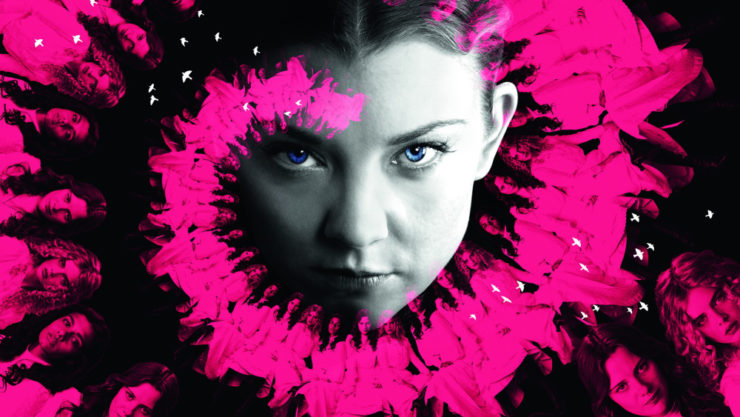We live in an age of remakes and reboots, which might say lot about Hollywood’s apparent lack of imagination, but I have to admire the uniqueness—and gall—of remaking Peter Weir’s 1975 Aussie thriller classic, Picnic at Hanging Rock. Weir’s arthouse hit about four missing women has been cited as an influence on some of this generation’s best directors, but it’s not nearly as familiar a property to broad audiences as, say, HBO’s recent adaptation of Fahrenheit 451.
That Amazon’s new miniseries is six hours long is a tell-tale sign that showrunner Larysa Kondracki is going to dive much deeper into the mystery, for good and for ill. Weir’s movie was loaded with female characters, but, similar to noted Picnic fan Sofia Coppola’s adaptation of The Virgin Suicides, much of the story was told from a detached male point of view. In the update, women get to tell their own stories and it makes for a very different experience. Not better or worse, just different.
But just as I felt about Fahrenheit 451, viewers might also wonder why this adaptation couldn’t have been an entirely original series instead.
I would’ve watched the hell out of a gothic historical drama that wasn’t confined and judged against its original source.
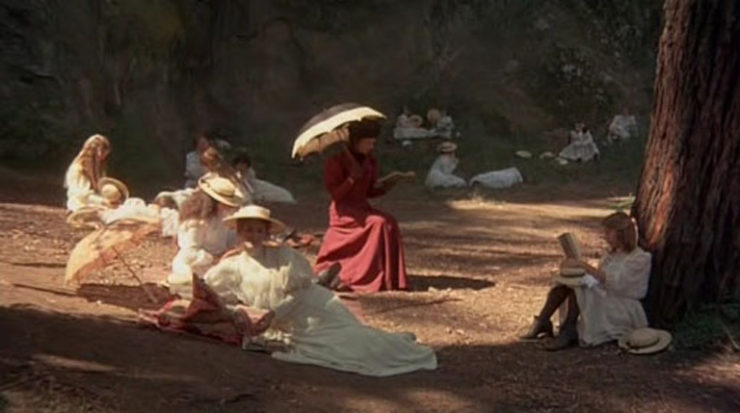
Weir’s film was itself an adaptation of Joan Lindsey’s 1967 bestselling novel that warned readers to “decide for themselves” if the story was fact or fiction. The truth is vague, as is everything else about the mystery of three college-age young women and their teacher vanishing on a Valentine’s Day picnic in 1900 Australia. The bulk of the movie is comprised of the search for the girls, questioning if they are dead, alive, or if they all ran away. The titular mountain is a star character as much as stern headmistress, Mrs. Appleyard. It looms, ancient and foreboding, luring the girls into its shadowed crevices. (Seriously, the sexual metaphors are strong in this one.) The unexplained and the uncanny are in conflict with a Victorian society that sought to repress everything wild, especially in women. Weir’s Picnic at Hanging Rock is haunting and gorgeous and full of a slowly unfolding dread that trails off into deeper mystery.
Which is to say, Amazon’s new original six-part miniseries is already, because of its length, on a mission to explain far too much.
The new Picnic at Hanging Rock is highly Instagram-ready—like a cheaper, parody version of a different Sofia Coppola movie: Marie Antoinette, complete with supermodels in gauzy dresses frolicking in slo-mo to a Björk song. That new and “improved” take might prove too heretical for the hardcore Weir fans.
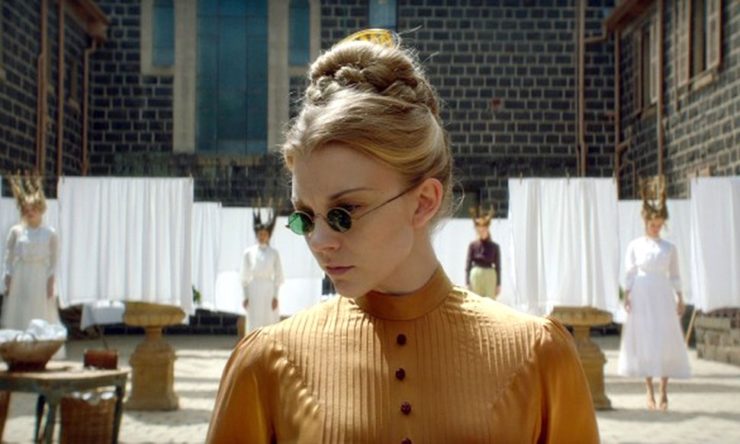
Natalie Dormer is Mrs. Appleyard, here a much younger college headmistress with a hugely expanded, shady past. Dormer smirks and glowers above the most stunning high-necked dresses, when she is not filmed from behind as a dramatic silhouette, which is approximately 70% of the time. Amazon’s series lacks a great deal of Weir’s ethereal beauty, but makes up for it with some cinematic overkill/flair that might appeal to fans of lush, spooky dramas like Hannibal. (Hannibal and Battlestar Galactica director Michael Rymer directs Picnic’s final two hours.)
And yet… I appreciate that the Amazon series tries to make each woman and girl on the show a more fully-realized character. The three main missing girls are Irma (Samara Weaving, niece of Lord of the Rings‘ Hugo Weaving), a wealthy, gorgeous blonde with a shitty stepfather; bookworm Marion (indigenous actress Madeline Madden), who is even more marginalized than she appears; and Miranda (Lily Sullivan), a slightly-less-wealthy, horse-loving free spirit who really, really loves talking about being a free spirit. Miranda also has a true stan at school, an adorable younger orphan named Sara, who is basically Victorian-era Arya Stark; she gets her revenge by constantly reminding people that they’re hypocrites, and it can be as effective as a sword.
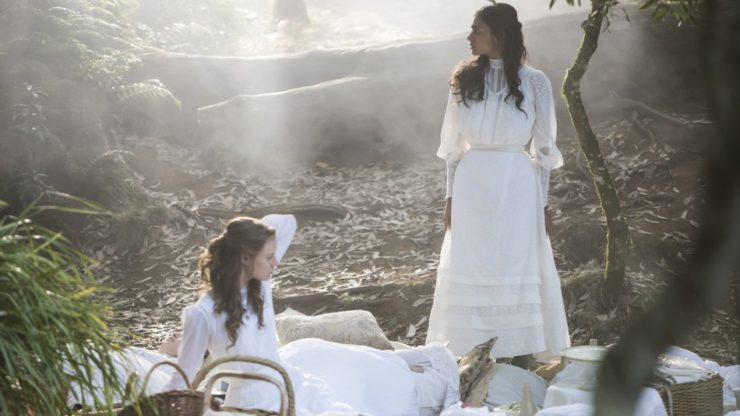
These inscrutable women express frustration with the fates that polite society has dictated to them: sensible marriage, good and copious breeding, servitude. There is a strong sapphic undertone to the schoolgirls’ crushes on each other (see above re: shadowy crevices), the adoring looks between teachers and students, and the scandal surrounding even the thought of their un-corseted bodies.
In the film version, Weir ultimately posits that women are, in general, mysterious and there are things about them that will always leave men wondering—which can be beautiful and seductive, but also alienating.
There’s little time for such subtleties in the Amazon age. Mrs. Appleyard is hiding a skeleton in her closet that is so clearly telegraphed that I wasn’t sure whether the show itself was confused about Mrs. Appleyard, unsure of whether to see her as a villain or if her own experience as an abuse victim made her a fierce protective mom to “her girls.” (Natalie Dormer says “Bring me back my girls” so much, with so much feeling, you’d think she was channeling the host of RuPaul’s Drag Race.)
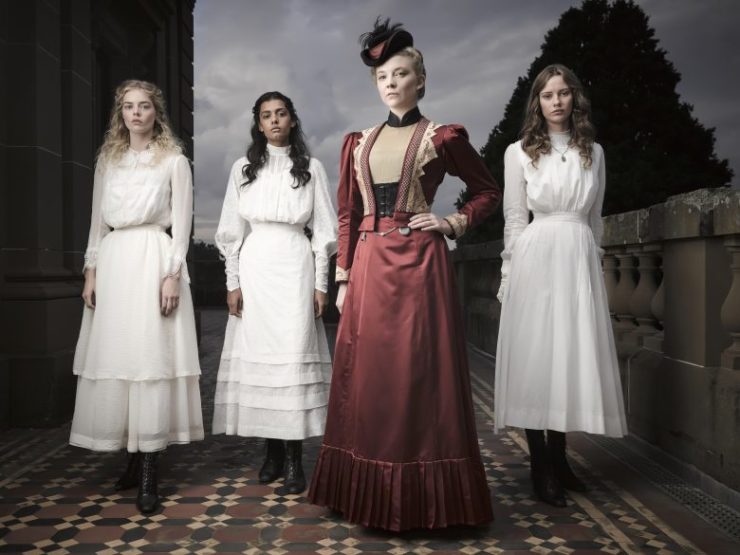
I do think the much more overt gay romances worked well, as did an expanded portrait of white Victorian vs. aboriginal communities’ relationship to Australia’s history and class divide. I also preferred Natalie Dormer’s slightly camp deliciousness to the perfectly manufactured rebellion of lead missing girl, Miranda. While the show does a sort of “People in the past are just like us!” dance, it is especially anachronistic when the three girls are alone, choreographed in ritualistic dances and undress that don’t add a whole lot to the story, but scream to be shared on Tumblr.
Are the kids still on Tumblr? Maybe the real problem is that I’m just a bit too old for this Picnic, yet, like Dormer’s Mrs. Applewood, a bit too young to be so uptight. But as a story about truth, memory, freedom, and nature, Picnic at Hanging Rock—in any form—remains an enduring generational haunt.
Amazon’s Picnic at Hanging Rock is streaming now on Amazon Prime Video
Theresa DeLucci has talked pop culture on Tor.com, BoingBoing, Barnes & Noble’s Sci-Fi & Fantasy blog, and Wired.com’s Geek’s Guide to the Galaxy podcast. Send her a Valentine on Twitter.










